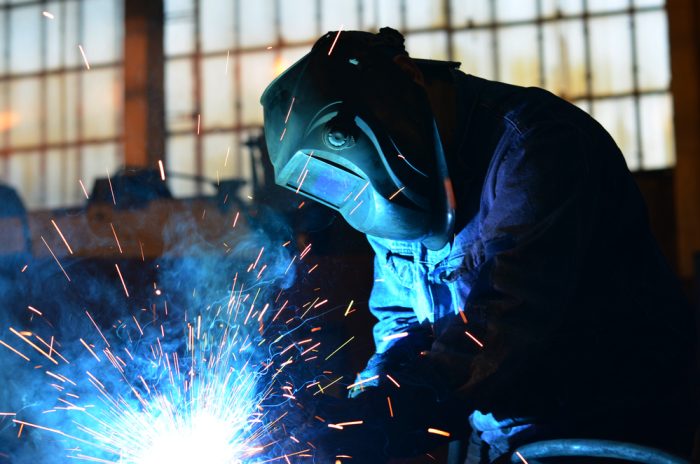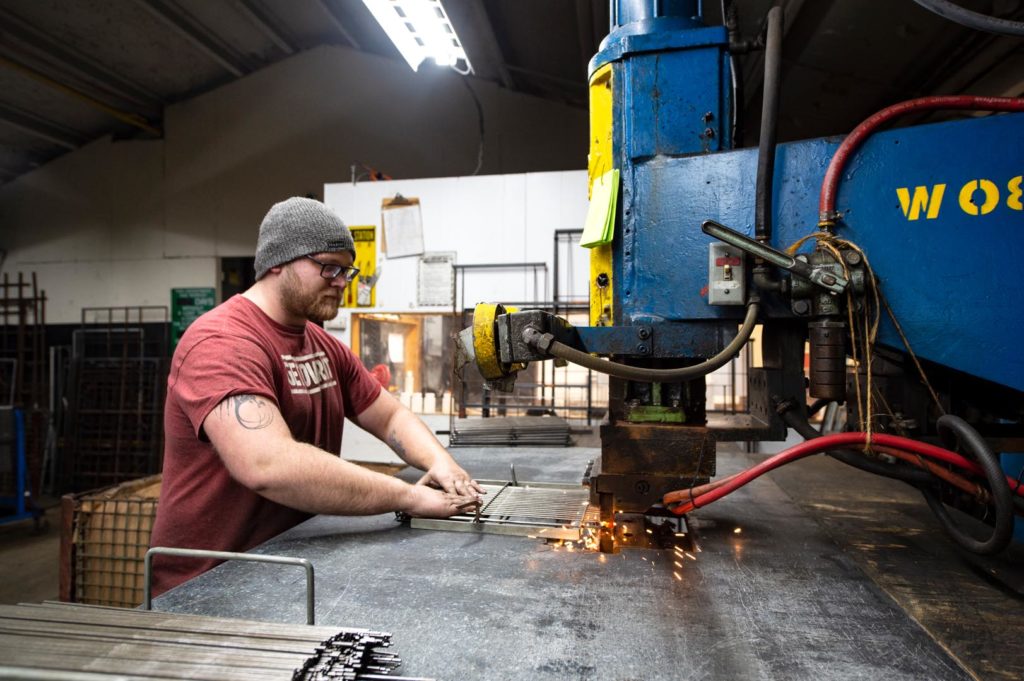How experts at Montana Mobile Welding and Repair Belgrade prevent porosity and distortion in welding
All Concerning Welding: Key Insights Into Techniques and Ideal Practices for Success
Welding encompasses a range of strategies, each fit for particular products and applications. Comprehending these methods, such as GMAW, SMAW, and TIG, is vital for attaining ideal outcomes. The ideal tools and safety techniques can not be forgotten. As prep work and troubleshooting play essential duties in the welding procedure, mastering these components can greatly enhance the quality of the last item. What are the crucial aspects that ensure a successful weld?
Understanding Various Welding Strategies
Welding methods encompass a range of approaches, each matched to particular applications and products. Amongst one of the most common methods are Gas Metal Arc Welding (GMAW), Secured Metal Arc Welding (SMAW), and Tungsten Inert Gas Welding (TIG) GMAW, additionally called MIG welding, is prominent for its rate and flexibility, making it excellent for thin products. SMAW, or stick welding, is favored for its simplicity and performance in outdoor settings, specifically with thicker steels. TIG welding offers precision and control, making it suitable for detailed work and non-ferrous steels (Belgrade Fabrication). Each strategy has its one-of-a-kind benefits and factors to consider, enabling welders to select the very best approach based upon the job's demands, product type, and wanted outcomes. Comprehending these techniques is important for successful welding
Necessary Welding Equipment and Tools
While different welding methods call for specific skills, the right equipment and tools are just as essential for attaining quality outcomes. Necessary welding equipment includes welding devices, which vary depending on the strategy-- such as MIG, TIG, or stick welding. Safety gear, including aprons, headgears, and gloves, guarantees security and convenience during the process. On top of that, clamps and components aid secure materials in location, guaranteeing accuracy in welds. Consumables like welding poles, wire, and protecting gas are likewise crucial components that influence the quality of the weld. Tools such as grinders and cutters facilitate surface area preparation and post-weld finishing, adding to a specialist outcome. Purchasing high-quality equipment ultimately enhances the effectiveness and effectiveness of welding projects.
Security Practices in Welding
Correct security practices are vital in the welding sector to shield employees from possible risks. Welders need to wear ideal personal protective tools (PPE), consisting of safety helmets with proper shading, gloves, and flame-resistant clothes. Appropriate air flow is important to lower direct exposure to harmful fumes and gases created during the welding procedure. Furthermore, employees must be trained in the right handling of welding tools to stop accidents. Fire precaution, such as maintaining combustible products away from the welding area and having fire extinguishers readily available, are essential. Regular evaluations of tools and workspaces can aid identify potential hazards before they bring about accidents. By adhering to these safety methods, welders can create a much safer working setting and decrease threats connected with their profession.
Preparing Materials for Welding
Preparing materials for welding is an important action that greatly affects the top quality and honesty of the last product (Montana Mobile Welding and Repair Belgrade). Correct prep work includes cleaning up the surfaces to remove contaminants such as dust, oil, and rust, which can compromise the weld. Techniques such as grinding, fining sand, or making use of solvents are frequently utilized to achieve a clean surface area. Furthermore, making certain that the products fit together snugly is vital; gaps can bring about weak welds. It's also crucial to take into account the positioning and positioning of the elements, as this will certainly impact the simplicity of welding and the final result. Choosing the suitable filler material and making sure compatibility with the base steels is important for attaining strong, resilient welds.
Tips for Achieving High-Quality Welds
Achieving high-quality welds calls for focus to information and adherence to finest methods throughout the welding procedure. Correct joint prep work is necessary, ensuring surfaces are clean and free from pollutants. Selecting the suitable filler material and welding strategy based upon the base metals is important for ideal bonding. Maintaining consistent traveling rate and angle while welding can stop flaws and promote harmony. Furthermore, controlling heat input is vital; too much warmth can result in warping and weakened joints. Routinely checking the welds throughout the process enables immediate adjustments if required. Employing proper post-weld treatments, such as cleaning and stress and anxiety alleviation, can improve the toughness and integrity of the weld, eventually making certain a successful outcome.
Repairing Typical Welding Issues
Welding frequently presents obstacles that can impact the high quality and honesty of the end product. Usual issues such as porosity, irregular weld grains, and overheating can occur, each requiring specific troubleshooting strategies. Understanding these issues is essential for welders to enhance their skills and attain ideal outcomes.
Porosity Problems Discussed
Although porosity can usually be neglected, it continues to be a vital concern in welding that can endanger the honesty read of a completed product. Porosity refers to the presence of small gas pockets within the weld bead, which can lead and compromise the joint to early failure. This trouble typically occurs from impurities, moisture, or inappropriate shielding gas protection throughout the welding process. To reduce porosity, welders need to verify that the base materials are tidy and completely dry, use suitable shielding gases, and preserve regular welding parameters. On a regular basis evaluating the tools and setting can likewise aid determine prospective problems before they show up in the weld. Addressing porosity efficiently is vital for attaining solid, long lasting welds that fulfill quality criteria.

Inconsistent Weld Beads
Inconsistent weld beads can substantially impact the quality and toughness of a completed item. Numerous aspects add to this concern, including incorrect travel speed, incorrect amperage settings, and irregular electrode angles. When the welder relocates also promptly, a grain may show up slim and do not have infiltration, while relocating also gradually can create extreme accumulation. Additionally, making use of the wrong amperage can cause either damaging or too much spatter, both of which concession weld integrity. The welder's method, such as irregular torch motion, can also lead to irregular grain appearance. To minimize these troubles, welders must concentrate on maintaining constant, controlled movements and check this site out ensuring proper devices settings to attain uniformity in their welds. Uniformity is key to accomplishing trustworthy and solid welds.
Overheating and Bending Issues
Too much warm during the welding process can cause considerable getting too hot and buckling concerns, impacting the architectural integrity of the workpiece. These problems typically show up as distortion, which can compromise positioning and fit-up, making more assembly challenging. Aspects adding to overheating include the choice of welding specifications, such as voltage and take a trip speed, in addition to the sort of material being welded. To alleviate these issues, welders ought to maintain consistent travel rate and ideal warm input while monitoring the workpiece temperature. In addition, pre-heating or post-weld warm therapy can assist minimize anxieties brought on by fast cooling - Fabrication. Regular assessment and adherence to finest techniques are crucial in preventing overheating and making certain the long life and dependability of welded structures
Frequently Asked Questions
What Are the Profession Opportunities in the Welding Industry?
The welding market provides diverse job chances, consisting of positions as welders, designers, teachers, and assessors. Specialists can operate in manufacturing, construction, aerospace, and automobile industries, profiting from strong need and competitive wages in different duties.
Exactly How Can I Boost My Welding Rate Without Giving Up High Quality?
To enhance welding speed without sacrificing high quality, one should practice reliable strategies, preserve devices, enhance setups, and enhance hand-eye control. Routine training and looking for responses can also considerably contribute to accomplishing much faster, premium welds.
What Certifications Are Offered for Welders?
Many certifications check out here exist for welders, including those from the American Welding Culture (AWS), the National Center for Building And Construction Education and Research Study (NCCER), and various industry-specific organizations. These qualifications boost employability and show skill effectiveness.
Just How Does Welding Affect the Properties of Metals?
Welding influences the buildings of steels by altering their microstructure, which can bring about modifications in ductility, strength, and hardness. Warm input and air conditioning rates during the process substantially affect these material characteristics.
Can I Weld Dissimilar Metals Together?
